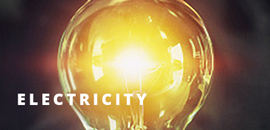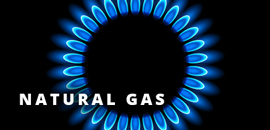PROGRESS REPORT
In January of 2009, Stephen F. Austin State University (SFASU) embarked on a mission to reduce utility costs that involved an issuing of a request for qualifications for a performance contract with an energy service contractor. Prior to that time, little had been done on campus to reduce energy or water consumption and curb associated costs. Building systems were run indiscriminately — often being left in “hand” position, therefore bypassing automated controls—to minimize impact to business operations. As a result, SFASU combined annual utility costs reached nearly $10.9 million in fiscal 2008, and the energy use index (EUI) peaked at 152.1 Thousand British Thermal Units (MBtus) per conditioned square foot of space.
SFASU began by establishing an Energy Conservation Committee with a goal of reducing energy consumption by 30 percent over 10 years. After a lengthy review and evaluation process, SFASU selected Siemens Building Technologies Inc. (Siemens Industry, INC.) as its energy service contractor and authorized the preparation of a detailed utility assessment report. After securing necessary funding, and subsequently completing all approved conservation measures (phases 1 & 2), SFASU reduced annual utility costs to under $7.5 million in 2013, while reducing its EUI to 118.0. Continued fine tuning of building systems and favorable utility rates further reduced the annual utility spend to $6.56 million in fiscal 2014.
As a result of the success of the initial energy service contract, SFASU commissioned another study (phase 3) to identify additional facility improvement measures to reduce the consumption and/or costs of campus utilities. These improvements were completed in March 2016 and included building HVAC/automation improvements, water sub-metering for sewer credits and additional lighting projects. The third full-year energy savings for electricity and natural gas were 8.43 megawatt hours (MWh) and 55,340 One Million British Thermal Units (MMBtu) respectively. Sewer credits from irrigation activities, cooling tower evaporation, and swimming pool water loss were 34,932 kilogallons (kgals) for the same period.
Most recently, Siemens had prepared a preliminary report for the next round of facility improvement measures (phase 4). The scope of work and associated costs were reviewed by SFASU administration and tabled for future discussions. Siemens has since offered to implement their Desigo CC Management Platform, which is a flexible, full client-server architecture that presents a single point of entry for users to operate, monitor and optimize building automation. SFASU has fully implemented this system allowing facilities staff to review and analyze current energy-saving techniques aimed at continuous improvement in energy-reduction initiatives.
In addition to saving energy and dramatically reducing costs, SFASU has strategically replaced inefficient, aging equipment that may have otherwise ended up on a long list of capital replacement needs competing for shrinking funds with other institutional factions. To further this initiative, all new light fixtures installed are of the LED type. This includes new installations and replacement of fixtures that have failed. In fiscal 2022, SFASU underwent a full relighting project of the McGee Business building. A total of 836 fluorescent light fixtures were replaced with LED fixtures and will reduce energy consumption from lighting in that building by approximately 40 percent. SFASU will continue to upgrade lighting campus-wide to LED fixtures as funding becomes available.
Energy and water usage reductions coupled with favorable electricity and natural gas commodity rates reduced SFASU fiscal 2022 utility spend to approximately $5.33 million, down 51 percent from the baseline year of 2008. It should be noted that conditioned space gross square footage (gsf) increased by approximately 8.9 percent (338,000 gsf) during this same period, city water and sewer rate increased significantly and SFASU lost the benefit of a 20 percent electricity distribution credit in 2017. Furthermore, the global COVID-19 pandemic dramatically changed the landscape of the University and affected the energy consumption across the entire footprint of SFASU. SFASU transitioned to near 100 percent online instruction in March 2020 through August 2020. The campus has returned to nearly 100 percent in-person instruction; however, enrollment is down compared to previous years.
Rising utility costs as a result of winter storm Uri in February 2021, combined with recent market uncertainty, will unavoidably impact the university’s utility budget primarily for electricity and natural gas. SFASU has secured a new electricity contract beginning Jan. 1, 2024, and will effectively raise electricity spending by approximately 22 percent. The university will also renew the natural gas contract in fiscal 2023 to take effect at the start of fiscal 2024 and is currently exploring options for that contract with the goal of obtaining the lowest possible rate, but it will undoubtably be significantly higher than our current contract rate.
Summaries of each phase of utility facility improvement projects are included on the following pages.
Phase 1 Summary:
- Start Date: July 2010
- Completion Date: December 2011
- Scope of Work:
- Energy Management and Control Systems – Chiller Plant Optimization
- Energy Management and Control Systems – Airside Optimization
- Water Management Upgrades (80 percent of total in phase 1; 20 percent in phase 2)
- Project Cost: $9,817,962
- Cumulative 8-year Guaranteed Savings: $9,590,850
- Cumulative 8-year Measured Savings: $14,168,369 (148 percent of guarantee)
Phase 2 Summary:
- Start Date: July 2010
- Completion Date: December 2011
- Scope of Work:
- Deferred Maintenance (central plant #1 boiler replacement, outside air handling unit – Music Building)
- Water Management and Upgrades (20 percent of total in phase 2; 80 percent in phase 1)
- Lighting Efficiency Retrofits (lamp technology and controls)
- Power Factor Correction
- Project Cost: $7,427,500
- Cumulative 8-year Guaranteed Savings: $8,060,712
- Cumulative 8-year Measured Savings: $8,556,647 (106 percent of guarantee)
Phase 3 Summary:
- Start Date: January 2015
- Completion Date: March 2016
- Scope of Work:
- Building automation/HVAC upgrades in 15 buildings (combined 1.3 million gsf)
- Deferred maintenance (central plant #2 and auxiliary building boiler replacement), lighting retrofits
- Sewer credit sub-metering for irrigation, cooling tower evaporation and swimming pool water.
- Project Cost: $11,345,915
- Cumulative 46-month Guaranteed Savings: $3,337,714
- Cumulative 46-month Measured Savings: $3,806,686 (114 percent of guarantee)
Phase 4 Summary:
- Survey completed in September 2015
- Proposed scope was reviewed by SFASU administration in fiscal 2019 and Phase 4 was tabled.
- Scope included additional building system upgrades (automation and HVAC upgrades), and campus-wide irrigation system upgrades.
GOALS
SFASU has made tremendous strides reducing utility consumption by implementing various facility improvement measures as well as reducing associated rates by employing strategic negotiating techniques. As a result, SFASU has reduced the total annual utility spend (electricity, natural gas, water and sewer) by 51 percent since the base year of fiscal 2008. Results and future short-term goals for each utility are listed below.
Electricity:
Achieved:
SFASU reached its peak electrical consumption in fiscal 2008 with just over 88.5 MWh. Electricity costs peaked in fiscal 2010 at just under $7.9 million. Fiscal 2022 actual figures were 62.1 MWh and $2.96 million. These figures represent reductions of 29.8 percent in consumption and 61 percent in associated costs from the respective peak years. Note that fiscal 2022 figures are slightly higher than fiscal 2021 due to the decrease in COVID-19 and subsequent return of students to campus thus increasing utility use.
Future:
Negotiated electric rate reductions are in effect for fiscal 2018 through Dec. 31, 2023, that are estimated to save approximately $700,000 per year in electricity costs as compared to previous years. The contract end date coincides with the Texas General Land Office terminations of all electricity contracts as directed by the Texas Legislature. Therefore, SFASU has secured a new electricity contract beginning Jan. 1, 2024, through the TX A&M Consortium with a rate approximately 22 percent higher than the current contract rate. Market rate increases are primarily due to winter storm Uri in 2021 along with market uncertainty related to the new U.S. presidential administration and the recent war in Ukraine. The university will unavoidably be facing higher electricity rates beginning Jan. 1, 2024.
Natural Gas:
Achieved:
SFASU reached its peak natural gas consumption in fiscal 2009 with just over 227,000 MMBtu. Natural gas costs peaked in fiscal 2008 at just over $2 million. Fiscal 2022 actual figures were 173,812 MMBtu at a cost of $751,730. This represents a reduction in consumption of 22.4 percent and a cost reduction of 62.8 percent from the fiscal 2008 peak year. While the fiscal 2021 year’s consumption was lower, the cost for that year was higher. The increased natural gas cost in fiscal 2021 was due to a one-week period in February 2021 when winter storm Uri caused market prices for natural gas to soar to over $400/MMBtu as compared to $3.42/MMBTU just one week prior. While SFASU is protected (to some extent) by a fixed rate contract, the estimated daily volumes are secured under the contracted fixed rate, and any amount used over the estimated daily volume is charged at the current market rate for that day. During the winter storm in February 2021, the university went over the estimated volumes for a number of days and the overage amounts were billed at the current market rates which varied from $11.23/MMBTU to $400.21/MMBTU during the one-week period.
Future:
The current two-year contract for natural gas was signed at the beginning of fiscal 2022 and will expire at the end of fiscal 2023. The university is currently exploring options for locking in the most favorable rate for the upcoming contract period, but due to elevated natural gas prices, it’s anticipated that SFASU will unavoidably spend more on natural gas beginning in fiscal 2024. Market rate increases are primarily due to winter storm Uri in 2021 along with market uncertainty related to the new U.S. presidential administration and the recent war in Ukraine.
Water & Sewer:
Achieved:
Annual water and sewer reduction results are more difficult to track at SFASU because of the lack of historical data available and the influence of weather conditions on consumption. During the four-year period from FY2008 – 2011, the campus averaged 215,668 kgals per year. Over the past five years, the average consumption has dropped to 155,609 kgals per year. This figure represents an average reduction in consumption of 27.9 percent. Water and sewer charges combined peaked in fiscal 2011 at $1,562,129. While water usage has decreased from the fiscal 2011 peak year, increased water and sewer rates have kept costs relatively stable. The combined costs in fiscal 2022 were $1,618,657.
In addition, adding sub-meters throughout the campus to measure irrigation, cooling tower evaporation and swimming pool water loss helped reduce the annual billed sewer units from an average of 163,250 kgals to 107,426 kgals in fiscal 2022 which represents an overall reduction of 52 percent. Despite an increase in city sewer charges, these costs fell from a high of $995,000 in fiscal 2011 to $451,000 in fiscal 2022 (54.6 percent reduction) despite a 30 percent increase in city sewer charges beginning in October 2016.
Future:
Phase 4 Implementation has been tabled as previously stated; however, SFASU will evaluate future possibilities in savings and usage reduction and discuss the feasibility of incorporating initiatives in fiscal 2023.
| Utility | Target Year | Benchmark Year | Percentage Goal |
|---|---|---|---|
| Water | 2022 | 2011 | 1 |
| Electricity | 2027 | 2008 | 0.85 |
| Transportation Fuels | 2027 | 2014 | 0.95 |
| Natural Gas | 2024 | 2009 | 0.9 |
STRATEGY FOR ACHIEVING GOALS
SFASU will continue to build on the success achieved through the implementation of recent facility improvement measures, including the use of performance contracting, opportunities presented through the capital renewal process, taking advantage of available funding incentives, and by achieving best practices through its operations and maintenance programs. Specifically, this includes:
Performance Contracting:
SFASU has already realized the benefits of performance-based contracts in its pursuit of achieving utility reductions. Due to the results achieved through this partnership, it is expected that SFASU will continue exploring other viable facility improvement measures in this manner.
Capital Renewal Program:
- Performing economic analysis and life cycle costing for major system purchases.
- Specifying cool roofing technology for replacement projects.
- Upgrading constant volume air distribution systems with variable air volume systems.
- Replacing pneumatically controlled systems with direct digital control.
- Replacing boilers with more efficient condensing units.
- Upgrading existing HID lighting at outdoor athletic venues to LED technology.
Incentive Programs:
- Apply for utility rebates where applicable.
- Utilize tax credits where appropriate.
- Apply for grants when available.
- Negotiate better rate contracts for utilities whenever possible.
Operations & Maintenance Practices:
- Control conditioned environments remotely through an integrated Building Automation System to approved standards and schedules.
- Continue upgrading lighting as reliable technological advancements dictate.
- Replace motors with premium efficiency units and install variable frequency drive units where feasible.
- Perform maintenance on all related equipment and components in accordance with manufacturer recommendations and established and evolving best practices.
- Monitor and report consumption levels and variances for all utilities.
IMPLEMENTATION SCHEDULE
Not reported.
AGENCY FINANCE STRATEGY
SFASU has incurred debt of more than $28 million to finance various facility improvement measures to reduce energy and water consumption.
| Date (Fiscal Year) |
Phase l & ll Beg Balance | Phase l & ll Payment |
Phase lll Beg Balance |
Phase lll Payment |
|---|---|---|---|---|
| FY 2021 | $1,655,805 | $1,506,436 | $8,723,373 | $956,737 |
| FY 2022 | $182,666 | $190,913 | $8,001,294 | $977,991 |
| FY 2023 | $0 | $7,238,538 | $999,735 | |
| FY 2024 | $6,433,520 | $1,021,979 | ||
| FY 2025 | $5,584,603 | $1,044,735 | ||
| FY 2026 | $4,690,093 | $1,068,017 | ||
| FY 2027 | $3,748,240 | $1,091,834 | ||
| FY 2028 | $2,757,234 | $1,116,202 | ||
| FY 2029 | $1,715,202 | $1,141,133 | ||
| FY 2030 | $620,208 | $620,208 | ||
| FY 2031 | $0 |
SFASU will continue exploring feasible opportunities while managing its debt obligations. Future projects will be funded with available capital improvement funds and likely will utilize energy service performance contracting.
EMPLOYEE AWARENESS PLAN
Employee awareness initiatives on the SFASU campus include the following:
- Maintaining a sustainability website that includes:
- Definition of sustainability.
- Vision statement.
- Goals and objectives (with graphs of results).
- Campus initiatives – outlines various facility improvement initiatives completed at SFASU.
- Getting Involved – campus and local events.
- News – e.g., announcing new electric utility vehicles for grounds maintenance.
- Fun facts.
- Student tips.
The SFASU Sustainability website can be viewed at http://www.sfasu.edu/sustainability/
- Communications from senior management to all staff regarding the conservation program, results achieved and contractual obligations of SFASU.
- Friendly shutdown reminders during the institution down time encouraging all to turn off everything possible and avoid using the facilities.
- Passive reminders reminding everyone to conserve, such as lighting controls throughout the campus and water aerators at bathroom/kitchen lavatories and resident showers.
- In January 2014, SFASU officially opened the Ina Brundrett Conservation Education Building in SFASU's Pineywoods Native Plant Center. The 3,100-square-foot facility will assist with the development and presentation of environmental education programs year-round, rain or shine. Funded entirely through private donations, the building is designed to integrate educational and outreach programs offered to the more than 17,000 SFASU Gardens visitors each year. The facility includes a 12.75-kilowatt solar array system installed on the building's roof which results in approximately 50 percent energy savings. The solar array was acquired through a $30,000 donation from the Sun Club. The array and its energy-use monitoring system also will serve to educate students and visitors about solar energy.
- Annual Earth Day activities held in the main plaza in which various student organizations participate to raise awareness of their specific causes.
- Consolidation of observed holidays to achieve prolonged equipment shutdown periods to reduce energy consumption and realize greater savings.






